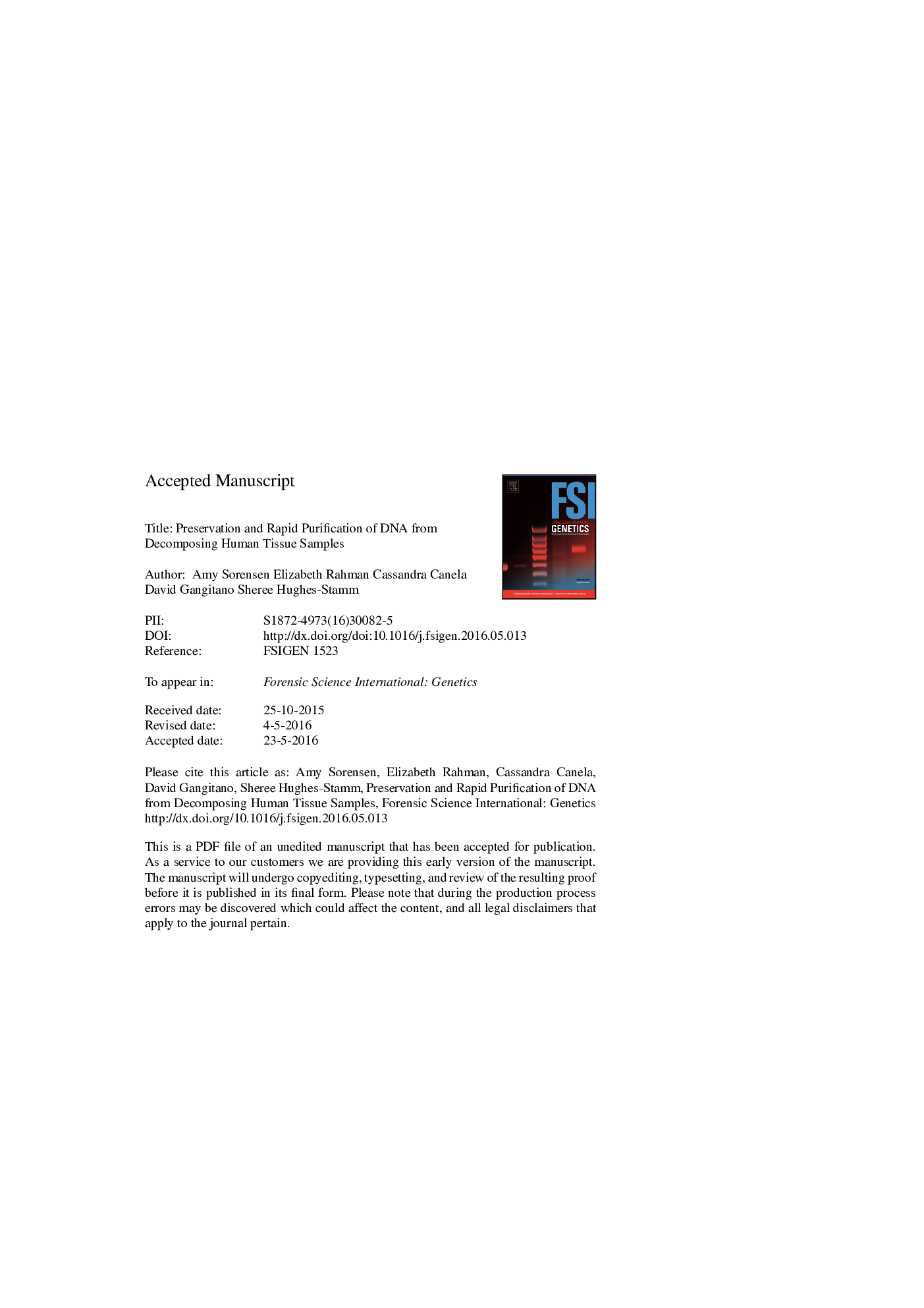| Article ID | Journal | Published Year | Pages | File Type |
|---|---|---|---|---|
| 6553456 | Forensic Science International: Genetics | 2016 | 32 Pages |
Abstract
The efficiency of each preservative was evaluated based on the quantity of DNA recovered from both the “free DNA” in solution and the tissue sample itself in conjunction with the quality and completeness of downstream STR profiles. As expected, DNA quantity and STR success decreased with time of decomposition. However, a marked decrease in DNA quantity and STR quality was observed in all samples after the bodies entered the bloat stage (approximately six days of decomposition in this study). Similar amounts of DNA were retrieved from skin and muscle samples over time, but slightly more complete STR profiles were obtained from muscle tissue. Although higher amounts of DNA were recovered from tissue samples than from the surrounding preservative, the average number of reportable alleles from the “free DNA” was comparable. Overall, DNAgard® and the modified TENT buffer were the most successful tissue preservatives tested in this study based on STR profile success from “free DNA” in solution when decomposing tissues were stored for up to three months in hot, humid conditions.
Related Topics
Life Sciences
Biochemistry, Genetics and Molecular Biology
Genetics
Authors
Amy Sorensen, Elizabeth Rahman, Cassandra Canela, David Gangitano, Sheree Hughes-Stamm,
